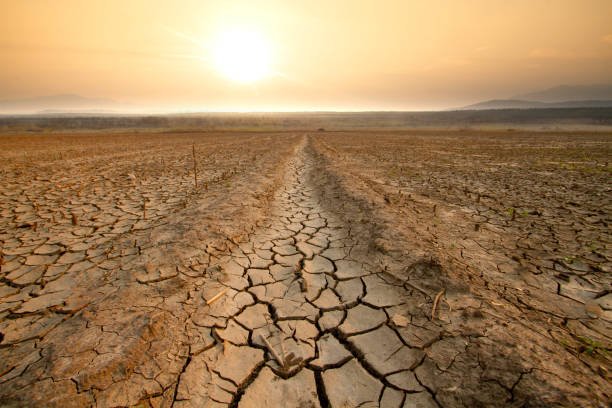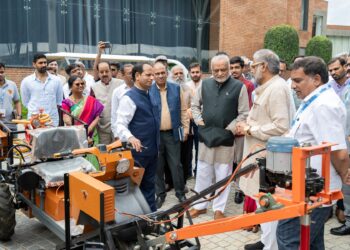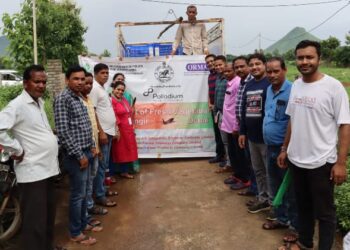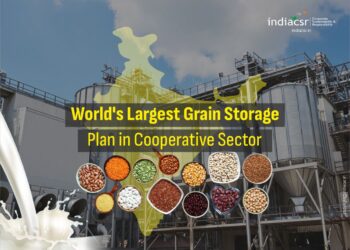By Vikas Parasram Meshram
By conserving water and ensuring adequate availability, we can improve the environment and also solve the problem of climate change. How much water does a person use in his life, but why does he try to save it? This is an important question, due to climate change, extreme events have increased by 134 percent since 2000, and drought periods have increased by 29 percent.
And the temperature increases continuously and hence the climate changes. These reservoirs and rivers have become dangerous for every component of human life. The overall water depletion in major reservoirs and river basins, including the Ganges, Indus and Brahmaputra, is experiencing worrying consequences of climate change, which may have serious water consequences for people. The latest data from the Central Water Commission shows the seriousness of India’s growing water crisis. An alarming decline in the level of reservoirs across the country is visible from the pictures or figures. According to the report, by April 2024, the water available in the major reservoirs of the country has decreased by thirty to thirty-five percent as per their sixty-five percent capacity. Yes, this is a big decline compared to last few years. J gives strict instructions in drought-like conditions. In which the El Nino storm is said to be the result and lack of rain is the root cause. Can’t imagine life without water.
Apart from humans and animals, water is also essential for all types of agriculture and most industrial production processes. But today India is facing a serious water crisis. Unplanned industrialization, increasing pollution, depletion of river basins, lack of respect for forests, degradation of the environment, insensitivity towards exploitation and non-exploitation of nature are pushing India towards a major water crisis. The water level in 150 major reservoirs across India is currently 31 percent, South India is the most affected state, 42 The reservoirs currently have only 17 percent capacity. This marks the worst water shortage observed in various regions of India. The situation in other parts of the world with water scarcity of 34 percent in the West and 32.5 percent in the North is worrying. The situation in East and Central India is good, the active capacity of their reservoirs is 40.6 percent, last year rainfall would have been deficient, especially in South India, 2023 would have been an unbearable year, a climate change would have created generally hot and cold conditions. This has created an atmosphere of anxiety.
We come to accept the truth that the evil of global warming and climate change has entered our fields and granaries. The speed at which the Earth’s temperature is increasing is becoming painful for the common man, but the crisis for farmers has only increased. The direct result of this is the increase in field productivity. To face this, well-planned preparation is necessary. Farmers will have to consider alternative crops that can give better production even in times of water shortage and high temperatures. There is a need to alert food producers about the dangers posed by global warming, if they do not get involved or ignore the crisis they are facing, this issue is also important because this issue is also related to the food security of the world’s largest population.
This means that every citizen of the country will be affected from time to time or due to crisis. In fact, the report of WMO, the global organization that monitors global temperature, raises concerns, in which it is said that the Earth’s temperature has been more or less higher than the average temperature in the last decade. A matter of concern is that there is a possibility of further increase in the current year. It is a scientific fact that an increase in global temperature will have consequences for climate change throughout the world. In fact, due to the global warming crisis in the last few years, it is difficult to estimate where unexpected rains have fallen and where there have been painful temperatures around the world. But despite this, developed countries do not seem to be aware of the governments or the serious crisis. In such a situation, the global temperature is predicted to increase by two degrees Celsius by the middle of the century. Which can be fatal for human life cycle and birds.
It is common knowledge that the major nations of the world do not seem to be committed to reducing carbon emissions and banning fossil fuels. Big nations around the world are inhumanly exploiting natural resources for the sake of development. In comparison to the pre-industrial times, today’s world temperature has crossed the prescribed limits, hence they are not taken seriously. Yes, this is a dangerous hour for us. The biggest matter of concern is that we are not able to adjust ourselves to the pace of changing seasons. In fact, we need to change our farming methods to suit the changing climatic patterns. There is a need to focus on traditional crops capable of yielding production in low rainfall and high temperatures. There would have been a time when you could produce a lot of grains in large areas in India, but you would be able to give a good peak only in the short rains. But with time, we started taking up more irrigation on a commercial scale.
The result of climate change is not only loss of food grains but also loss of vegetables, fruits and flowers. In such a situation, paper alone does not work and there is a need to take concrete steps on the ground. Our agricultural universities will have to prepare new types of peak seeds.They can not only provide support to farmers but can also secure their food security chain. Apart from this, the sources of carbon emissions will also have to be curbed. We will have to control the sources of methane emissions because India is second only to China in methane emissions. Apart from this, protection of livestock is also a binding matter. Still, we have not woken up, but we have to be prepared for such calamities as excessive rain, drought, flood, cyclone etc. This crisis is big for India, where half of the country’s population depends on agriculture and related businesses.
Due to lack of adequate rainfall for a long time, water scarcity has reduced. Due to this, drought-like and unsafe conditions have been created in many areas. Therefore, different choices lead to opposite results. One reason for this is that even today less cultivable land in the country depends on monsoon rains. In such a situation, the future of farming completely depends on the condition of normal monsoon. In fact, due to continuously increasing temperatures the water level is decreasing rapidly. Due to its serious consequences, water scarcity has become serious in the states of Andhra Pradesh, Karnataka, and Tamil Nadu. The country’s IT hub Bengaluru is facing a serious water crisis. The result of which is not only lustful but also lustful.
It has huge consequences for daily life. In such a situation, to face any eventuality, there is a need to intensify efforts for water conservation from homes to all agricultural systems and industrial works. With the increase in population, water consumption has increased, but there is a clear shortage of clean water on the earth. Due to changes in the atmosphere and increasing temperature of the earth, the problem has become serious. Like many parts of the world, India is facing water crisis. 18 percent of the world population lives in India, but only four percent of the water resources are available there. Efforts made since ancient times to address the problem of water scarcity in India are expected to be acknowledged on a large scale and a revolution in water conservation can be brought about.
The main sources of water saving here are rivers, ponds and ponds, it is necessary to conserve them and people should start collecting water from village ponds for water conservation. By taking proper care and preparing or renovating small ponds, we save rain water. About 70 percent of the Earth’s surface is filled with water. But, potable water is only three percent. However, you are actually only able to use one liter of pure water. Therefore, it is necessary to understand how important the need for water is and take water saving actions.
About the Author

Vikas Parasram Meshram is a social worker and activities working towards the rights of tribal and marginalized communities.























